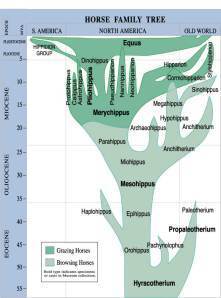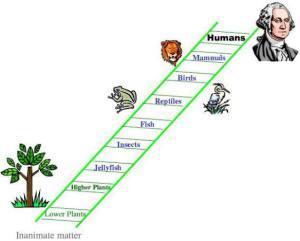Kate Rauner's Blog, page 102
December 28, 2013
Flashbacks and Subplots
 Heaven’s Shadow by David S. Goyer and Michael Cassutt, http://bit.ly/1cOn4WY is strongly flavored with NASA-speak and reminiscent of other “first contact” stories involving a “Big Dumb Object.” Of the 37 reviews on Amazon, well over half (22) rated the book 4 or 5 stars, which is all any author could hope for. Some readers disliked the characters, thought other “Big Dumb Object” books did a better job, or complained the story set you up for the next book in the series without its own satisfying conclusion.
Heaven’s Shadow by David S. Goyer and Michael Cassutt, http://bit.ly/1cOn4WY is strongly flavored with NASA-speak and reminiscent of other “first contact” stories involving a “Big Dumb Object.” Of the 37 reviews on Amazon, well over half (22) rated the book 4 or 5 stars, which is all any author could hope for. Some readers disliked the characters, thought other “Big Dumb Object” books did a better job, or complained the story set you up for the next book in the series without its own satisfying conclusion.
But one complaint echoed something I noticed as I read: The book will lead you through an exciting chapter to a cliff-hanger, and then jump to a subplot. The first such jump is quite jarring.

One of the classics of the “Big Dumb Object” genre
As an aspiring author, I’ve read many opinions on what makes a book sell. It seems that people decide to read a book based on the first page or a thirty-second perusal. Even if you’d like to browse more, Internet vendors only show you the first few thousand words. The common advice is: Grab them by the eyeballs! If the first chapter doesn’t contain an explosion (at least metaphorically), no one will read the book. Story groundwork gets relegated to flashbacks or similar techniques.
What do you think of this trend in fiction? Would you like to see the author choose an action-packed chapter and place it at the front of the book as an excerpt, so you could read it on-line, and then present their story in chronological order? Should Internet vendors scatter their preview pages throughout the book? Would that create spoilers? Do you like alternating the main story with flashback or subplot chapters?
Every book you buy is training the current crop of hopeful authors. What do you want them to know?








December 25, 2013
Merry Xmas
December 22, 2013
Looking Up ‘Science’

Carl Sagan
Merriam-Webster, recorded a 176 percent increase for the word “science” on their web site when compared with last year: http://bit.ly/18YtofN I don’t know why people wanted to look up “science”, but it seems like a good thing.
Science can’t tell us what the “right thing” to do is in most cases, but understanding science should inform our choices. You can’t participate fully in discussions about climate change, or genetically modified crops, or disease prevention, or government spying, or much of anything else without understanding the science behind the topic as well as the ethics and values involved. Take a look at http://skeptoid.com/episodes/4037 for a checklist on how to spot pseudoscience. As Carl Sagan said “We’ve arranged a global civilization in which most crucial elements profoundly depend on science and technology. We have also arranged things so that almost no one understands science and technology. This is a prescription for disaster. We might get away with it for a while, but sooner or later this combustible mixture of ignorance and power is going to blow up in our faces.”








December 18, 2013
Planet Hunting
You can join the zooniverse; real science you can do,
Space or climate, nature, and exoplanets too.
When planets pass before a star, its light will dim and fall;
NASA posts the data: Light curves are what they’re called.
The human brain works wonderfully for patterns to detect,
A treasure hunt for planets that amateurs can get.
But if you want more data still you can collect your own,
And find an exoplanet, be an amateur renowned.
From the NASA data, you select a likely star,
Then track its magnitude yourself to seek a planet far.
You’ll need to read and learn and then you’ll find you can begin.
You’ll need a camera and a mount; filters, software, then
You’ll need a telescope; find one you can afford;
And one more thing, if planet-hunting strikes in you a cord.
You’ll want patience in abundance, because, night after night,
You’ll record the magnitude, watch for that dip in light.
It helps to have some company, and to be warmly dressed,
But what you need more even so, is to be obsessed.








December 14, 2013
Power From the Moon

Tycho Crater on the Moon at sunrise – a tough place to install solar panels
The Japanese firm Shimizu, one of world’s largest architectural, engineering, and construction firms in the world, has drawn up plans to install a ring of solar panels around the moon’s equator http://bit.ly/1bfgLct . The collected energy would be beamed back to Earth. While this strikes me as a publicity stunt, it is an intriguing idea. The benefits are easy to see: no power plants fueled by coal or gas or uranium; no mining for those resources either. No acres of solar panels or ridges lined with wind turbines. Power receiving stations could be scattered around every nation, reducing the need for large transmission lines. Cost savings would be big.
Problems would be even bigger. Receiving stations will be out of range about half the time, so maybe we’ll still need to generate on Earth’s surface. Half the panels will be on the night-side of the moon at any given moment, lowering overall efficiency. The installation will be vastly expensive. For the 6,800 mile length of the lunar equator, Shimizu proposes a width of 248 miles. That will require 1,686,400 square miles of solar panels, which Shimizu claims would generate 13,000 terawatts. At a cost for panels of $0.65/watt (and I’ve seen higher estimates), that’s roughly $6,500,000,000,000,000. That’s $6.5 quadrillion (I had to look it up), and it’s just for buying panels here on Earth.
It’s still intriguing. How would we run such a project? First we’d need a station that can safely receive the power. Then we’d want a factory to manufacture the panels on the Moon. And robots to install and maintain the panels. We’d start small. Imagine a robotic factory with half its output being another robotic factory. Just leave it churning away on the Moon. Someday, the entire surface could be covered in panels. If they were exceptionally efficient and absorbed all wavelengths of visible light, we’d never see the Moon from Earth again.
Would we owe rent to anyone for the installation? The United Nations 1967 publication “Outer Space Treaty” states space is the “province of all mankind” and not subject to claims of sovereignty. The international Moon Treaty of 1984 forbids private ownership of extraterrestrial real estate. (Sorry – that deed to an acre of the Moon you got for your birthday is just a gag.) But I bet lots of people would want a say in the project.
So I think Shimizu is pulling a stunt, but maybe it foreshadows a real project in the future. Maybe thinking outside the box means thinking outside the planet.








December 12, 2013
Cover the Earth – a poem by Kate Rauner
Humans spread both far and wide
And carry others on the ride.
From pole to pole and all around
The Earth’s equator they are found.
Continents are crossed by herds,
The globe is spanned by flights of birds.
A humble fungus does the same,
Grabs all the range that it can claim.
Mushrooms follow this convention:
Move one hand breadth each generation.








December 7, 2013
Mushrooms Manufacture a Breeze
 What’s more passive than a mushroom? Unlike grasses that hold their seedheads up high so seeds can hitch a ride on the wind, mushrooms grow close to the forest floor, often half hidden in damp duff. Have you ever wondered how mushrooms spread their spores? A study, presented this past week (on Nov. 25, reported here) at the annual meeting of the American Physical Society’s Division of Fluid Dynamics in Pittsburgh, has an answer: mushrooms make their own wind.
What’s more passive than a mushroom? Unlike grasses that hold their seedheads up high so seeds can hitch a ride on the wind, mushrooms grow close to the forest floor, often half hidden in damp duff. Have you ever wondered how mushrooms spread their spores? A study, presented this past week (on Nov. 25, reported here) at the annual meeting of the American Physical Society’s Division of Fluid Dynamics in Pittsburgh, has an answer: mushrooms make their own wind.
“Wind” may give the wrong impression: more like a light breeze, a draft, a current of air.
Mushrooms contain lots of water, which evaporates through their skins. Evaporation is a cooling process, as the phase change from liquid water to vapor uses up heat energy. Water vapor, being less dense than the surrounding air, tends to rise. The cooled air, being more dense than the surrounding air, tends to sink and spread out. The two forces help carry spores out of the mushroom, and give them a little lift. The spores ride the mushroom’s zephyr across a distance about the width of your hand.
It doesn’t sound like much, but it seems to work. Mushrooms are a species of fungus and there’s a lot still to learn about fungi. There may be a million species out there to study.








December 4, 2013
Dogs Go Woof, Cats Go Meow, Llamas Go… a poem by Kate Rauner
Llamas hum when they’re hungry,
They hum when they’re bored,
They hum when they’re nervous,
Or away from their herd.
Oh, they’ll scream when they’re fighting,
Or snort as they run,
But if you want to know
how llamas go:
Llamas go hummm.








December 1, 2013
It’s Getting Crowded Up There
UPDATE on Mangalyaan: “India’s first mission to Mars left Earth’s orbit early on Sunday, clearing a critical hurdle in its journey to the red planet.
[Meanwhile] China, a keen competitor in the space race, has considered the possibility of putting a man on the moon sometime after 2020 and aims to land its first probe on the moon on Monday.
It will deploy a buggy called the ‘Jade Rabbit’ to explore the lunar surface in a mission that will also test its deep space communication technologies.”
From Reuters.com








November 27, 2013
Horse According to Man – a poem by Kate Rauner

Redrawn by Holly Harvey from Bruce J. MacFadden, Fossil Horses. Cambridge University Press, Cambridge (1992)
Inspired by Stephen Jay Gould’s essay ‘Life’s Little Joke’.
Since eighteen hundred seventy nine and Huxley’s chart illustrious,
The story of evolving horse has been passed down to all of us.
Eohippus, Mesohippus, Protohippus, Equus:
Each with lesser toes and larger teeth for grass ubiquitous.
Neat and tidy, moving up, a story to betray
From primitive to modern, how progress is conveyed.
But Equus lingers only as a remnant of the way
Its vibrant bush of species has dwindled till today.
Merrychipus, Hypohippus: three-toed feet sublime.
Pliohippus’ single toe did not evict their kind.
Four million years or more they galloped happily through time:
Evolution as vivacious tree, not ladder life must climb.
There is another creature, modern remnant of abundance,
Lone surviving species of diversity it showed once,
Now tries to draw life’s journey with a thumb in every fist,
And draws a ladder reaching only to our own hubris.

theskepticalteenager.wordpress.com




















